One of the best things about foraging chanterelles is coming home with a big ol’ beautiful harvest! But then what do you do? How does one prepare chanterelle mushrooms to be stored or cooked? The mushrooms do need to be cleaned and prepped before cooking. And if you’ve never worked with chanterelles before, it may seem tricky.
Fortunately, preparing chanterelle mushrooms isn’t hard; it can just be a little time-consuming, depending on how many mushrooms you’ve brought home. But there are some preferred ways to prepare chanterelle mushrooms and things to know before you dive in. These can help make the cooking process simple and turn those chanterelles into an amazing dish. Yes, please!
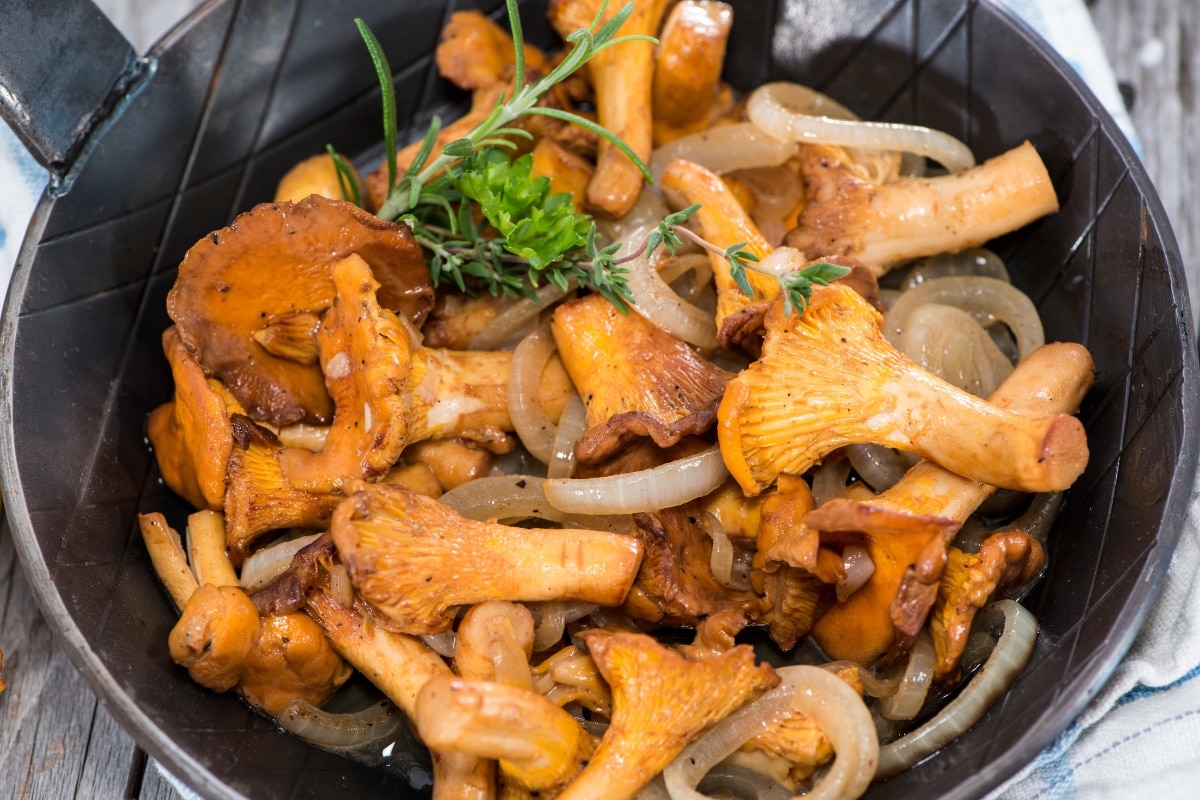
Chanterelle mushrooms have a pretty long foraging season that stretches from late spring through early fall. They are top among the wild edible mushrooms because of their firm, chewy texture and earthy, nutty flavor.
They are simple to prep and prepare. Chanterelles are excellent in a number of recipes, from simple sautés to more intricate and involved cream soups and risottos. We’ll also talk about ways to preserve the harvest if you’ve had an especially bountiful foraging season!
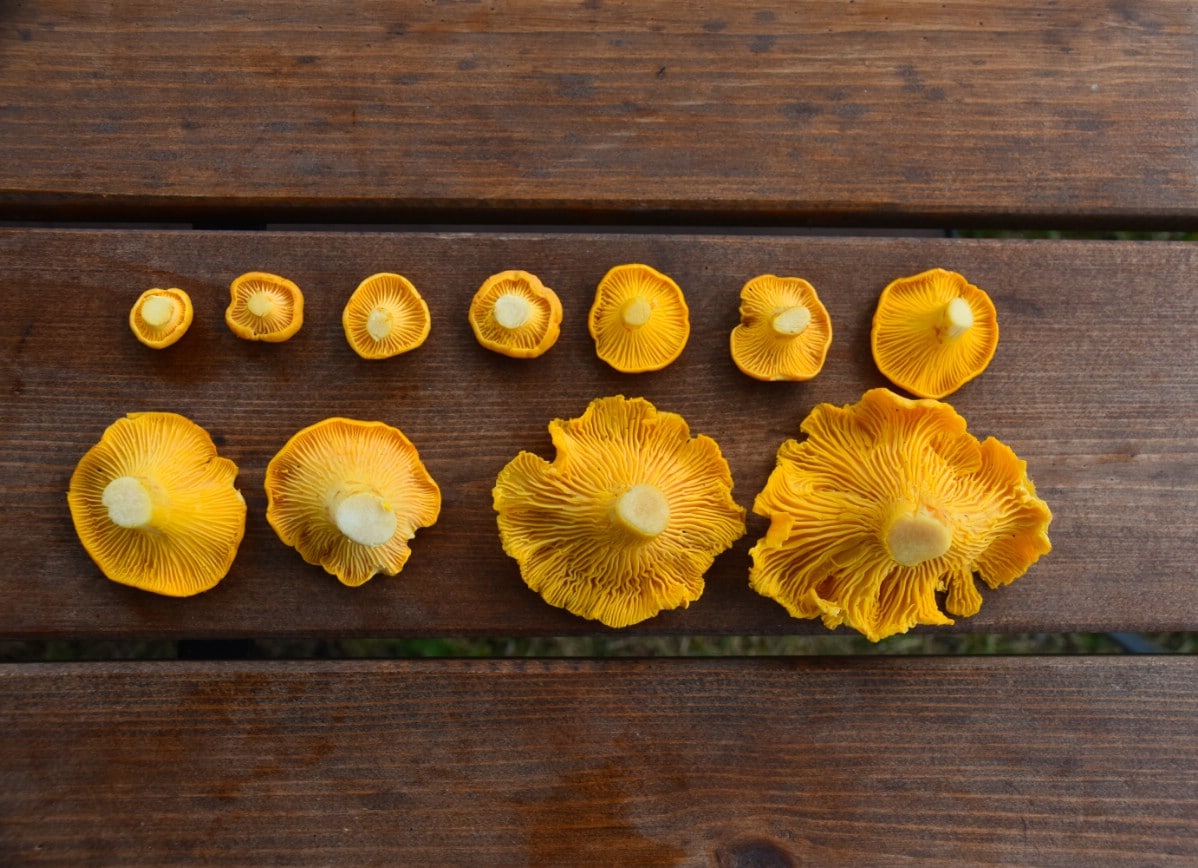
Jump to:
What Are Chanterelle Mushrooms
Chanterelle mushrooms are golden, funnel, or trumpet-shaped and smell like apricots. They are a dense, yummy mushroom that is prized by foragers and fancy chefs. They range in color from bright golden yellow to deep red to white. The golden yellow chanterelles are the most common and well-known. They are all edible, and they all taste incredibly delicious.
Fresh chanterelles are 2 to 4 inches in height and width. As they mature, their caps go from buttons to flattened to funnel-shaped. The edges of the caps naturally develop into wavy or lobed patterns as the mushrooms age.
Chanterelles don’t have common gills. They have but false gills that are blunt-edged ridges that fork and cross-vein down the stem. Their solid stem is yellowish with creamy white flesh.
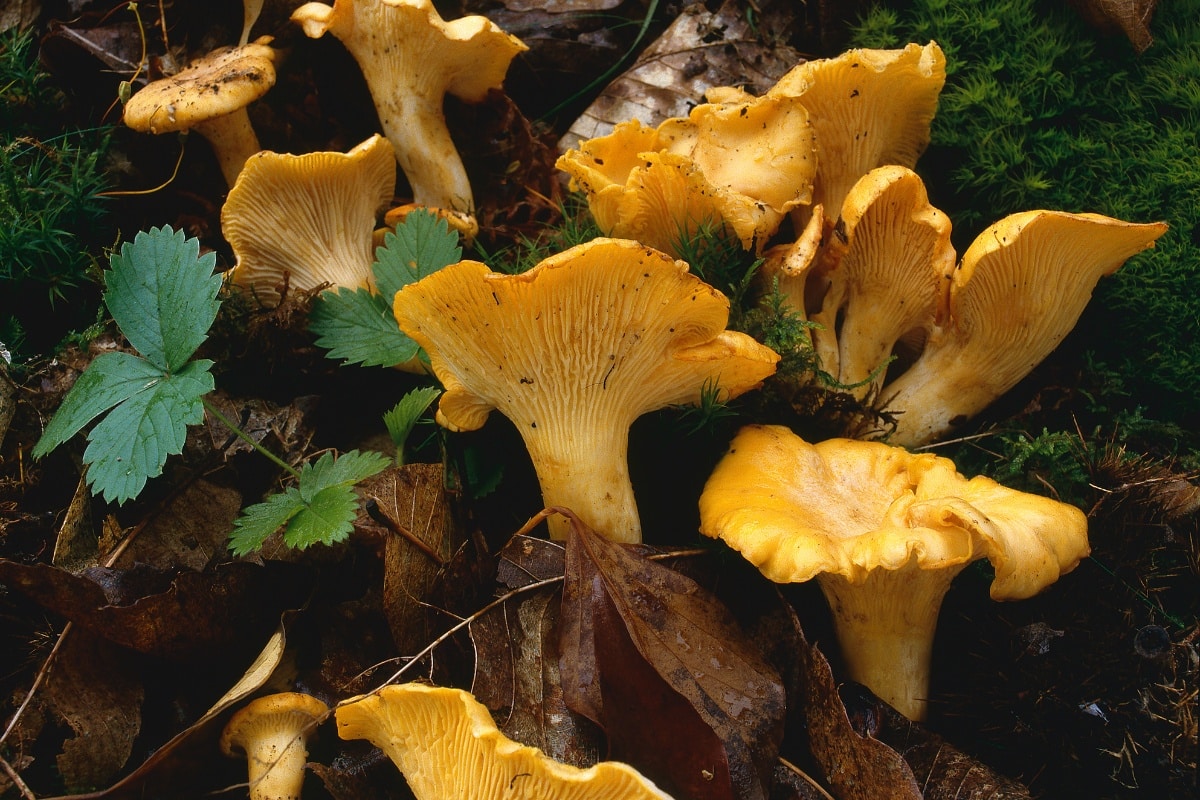
The chanterelle harvesting season changes substantially by region. Eastern United States and Canada see these mushrooms from June through October, with peak growth in July and August. The West Coast and Pacific Northwest’s chanterelles show up in fall and stay through winter. The Gulf States get an earlier season that runs from May to September. The tropical climate of Florida supports chanterelle growth from mid-May until late November.
Chanterelles are only found in the wild; they are not cultivated (yet!). The primary reason is that it is extremely complicated to replicate their mycorrhizal relationship with trees reliably. What this means, though, is that chanterelles are only available wild foraged. And they’re only available when they’re in season. This, along with their amazing flavor, makes chanterelles one of the top sought-after and most expensive mushrooms on the market.
Finding wild chanterelles is always a celebration. Thankfully, too, they usually fruit in large groupings so it’s easy to get a good bunch for cooking.
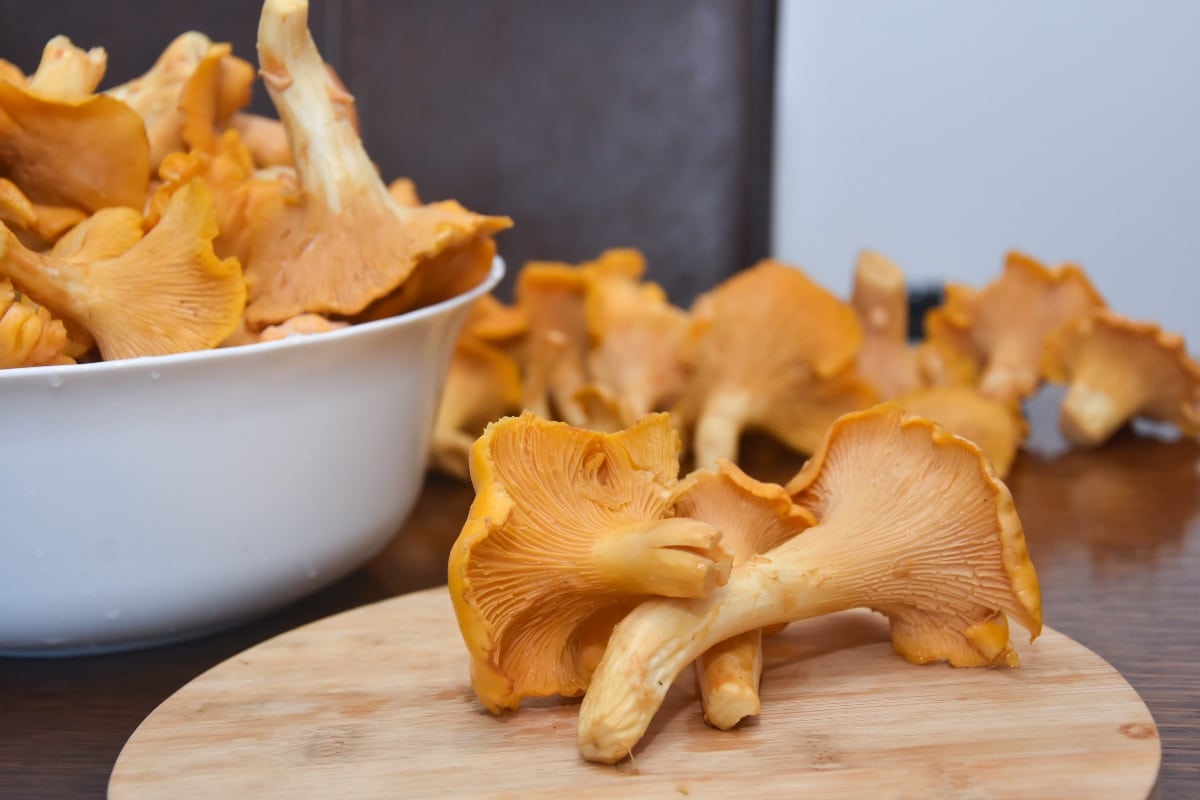
Foraging Chanterelles
Fresh chanterelles are a bright yellow to golden-orange color and feel plump and firm. A good chanterelle has a smooth cap surface without any dark spots or discoloration that shows age or damage.
The mushroom should feel springy when you press it gently. The good ones stay firm and are not soft or mushy. Mushiness means they’re going bad. To check, cut one open, and you should see clean white flesh inside.
Fresh chanterelles have a unique smell, a nice, slightly peppery, fruity scent similar to apricots. You should always smell the mushrooms! If you notice a musty or off smell, that’s a sign they’ve gone bad and should be left behind.
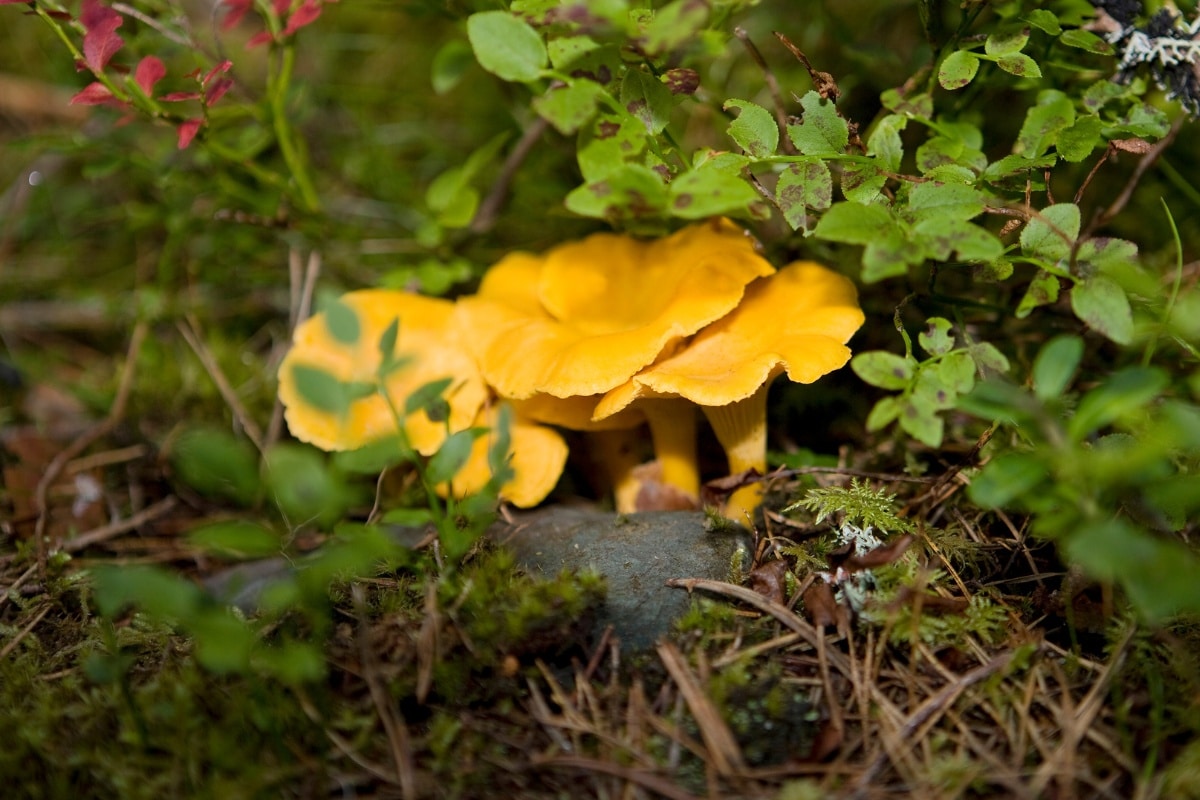
Cleaning Chanterelle Mushrooms
The best approach for cleaning chanterelles is to clean them out in the field as you collect them. We always try to begin the process to prepare chanterelle mushrooms as we gather them.
In the Field
Use a soft-bristled brush and sweep away any debris from the caps and gills. This first clean helps keep dirt where it belongs (in the forest!).
Cut off the bottom portion of the stem, too. That part always has lots of dirt sticking to it. Many people don’t do this, but it really does stop dirt from getting all over the chanterelles as you add them to your basket. Look at each mushroom carefully after brushing. Throw away any that are too dirty or damaged or are filled with bugs.
The cleaned-up chanterelles should go into paper bags or baskets that let air flow through. Chanterelles can be very fragile, and if you pile them all on top of each other in tight quarters, they’ll crumble and break. It’s best to use a basket or large container so they have room to breathe and don’t get squished.
Put the chanterelles in their own basket or large paper bag. If you add other mushrooms to the basket, like large boletes, the chanties will get smashed or broken. They are pretty delicate mushrooms!
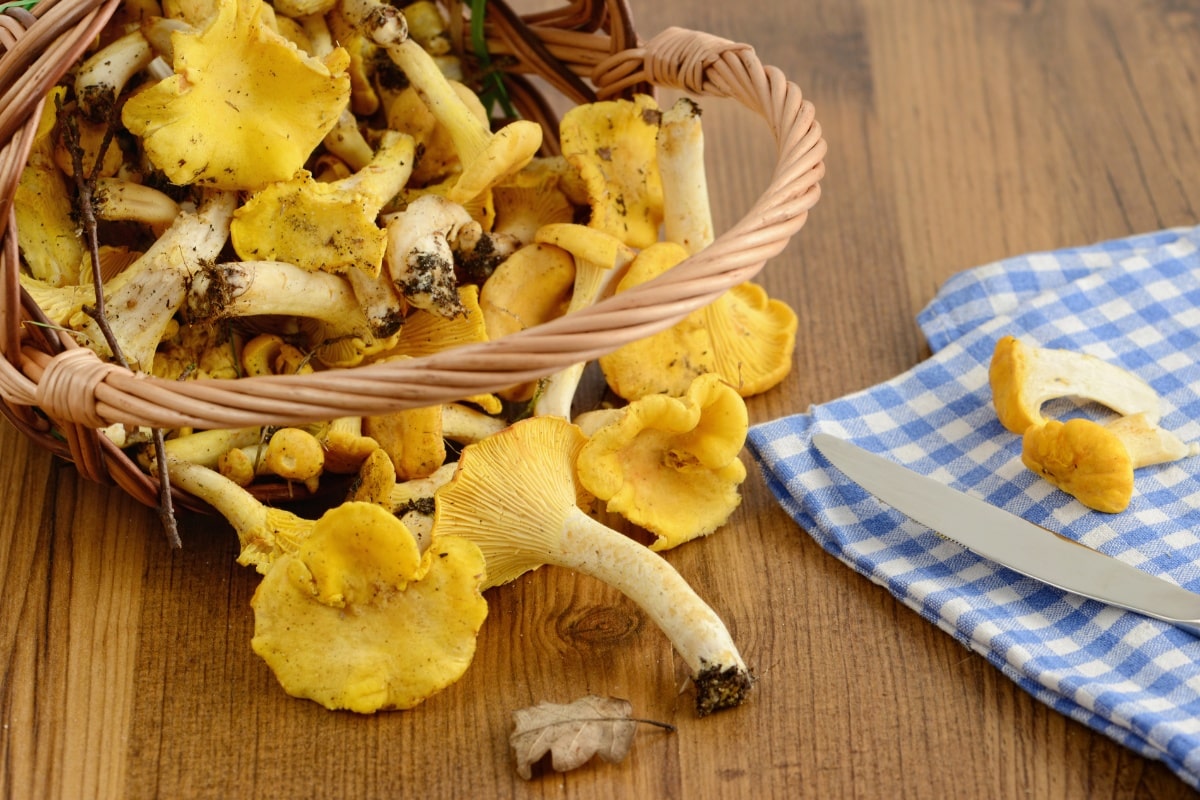

At Home
Don’t wash the chanterelles until you are going to cook them. If it’s going to be a few days before you use them, store them in the fridge in a brown paper bag, uncleaned. The washing and cleaning process significantly shortens their shelf life.
There’s quite a bit of debate about whether washing or brushing works better. Some like to keep things dry, but you might need water to clean and prepare chanterelle mushrooms from sandy areas or those that are incredibly dirty.
The real truth is that there is no right or wrong way; it is just preferences. And decisions based on how the mushrooms are going to be cooked. Anyone who says there is only one proper way to clean chanterelles is misguided.
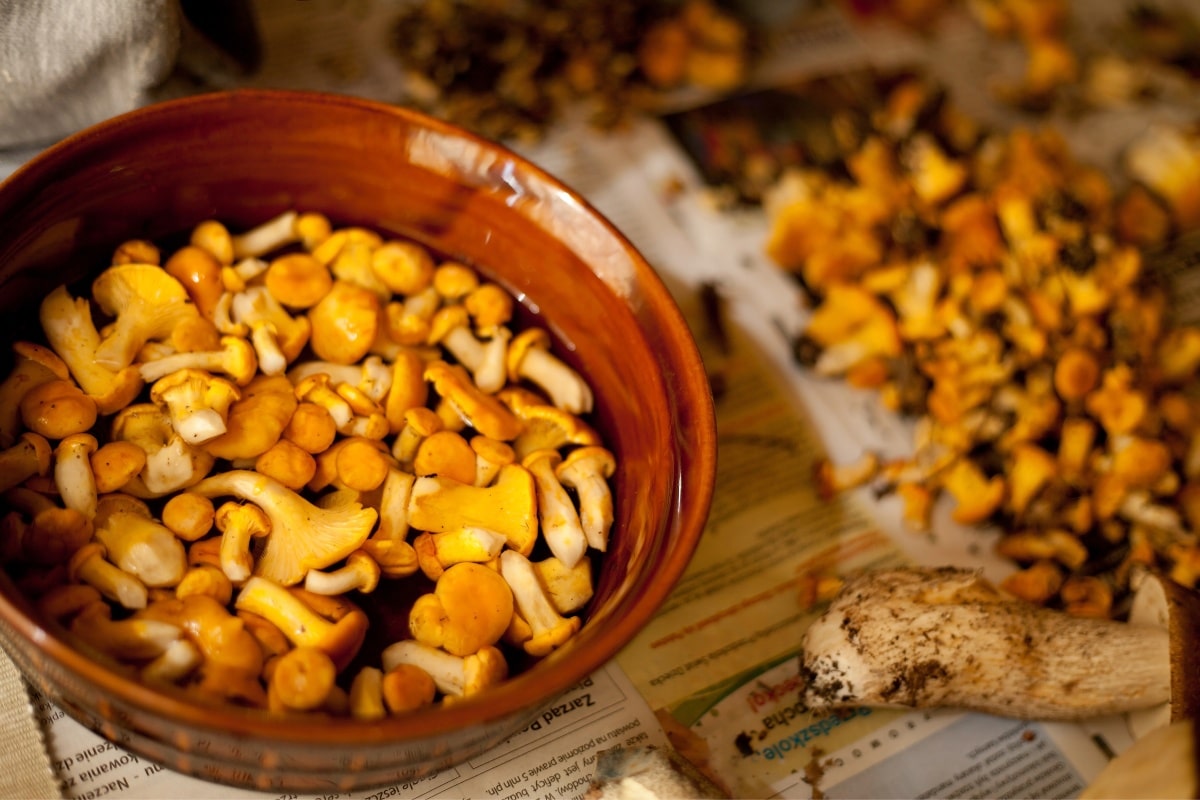
The issue with washing is that you need to use them straight away. They won’t last long fresh once washed. If you only have a small bunch and have plans for cooking with them or storing them immediately, then washing them is fine.
Another point about washing them is that it can make the mushrooms soggy. For many people who aren’t familiar with dry sautéing, soggy mushrooms are a huge deterrent to soaking. Whether this matters or not, though, depends entirely on your planned preparation method.
Since we often get big harvests and it takes a bit of time to clean and prepare chanterelle mushrooms, we opt for the quickest and easiest — this is a good long soak and lots of swishing in the water. Since we like to dry sauté wild mushrooms, washing or soaking them isn’t an issue.
For mushrooms with soil, needles, or debris:
- Brush them under a gentle stream of water
- Clean the ridges with a soft-bristled toothbrush
- Use the back side of a knife blade to scrape off dirt on the stem
- Use the knife blade to pick out any pine needles or really stuck on dirt.
- Give them another quick rinse
- Pat them dry with paper towels
When your mushrooms are filled with bugs and super dirty(honestly, though, if they’re super buggy, they’re probably not worth harvesting):
- Fill a bowl with cool water
- Mix in 1 tablespoon of salt for every 4 cups of water to remove bugs
- Let them soak for 20 minutes
- Swish the mushrooms around vigorously several times to dislodge dirt and debris
- Drain and repeat if needed
Dry the mushrooms well. You can place them on a wire rack or a tray lined with a towel and let them air dry for several hours. Alternatively, you can use a salad spinner to get out the excess water, but be careful as it might damage smaller or more delicate mushrooms.
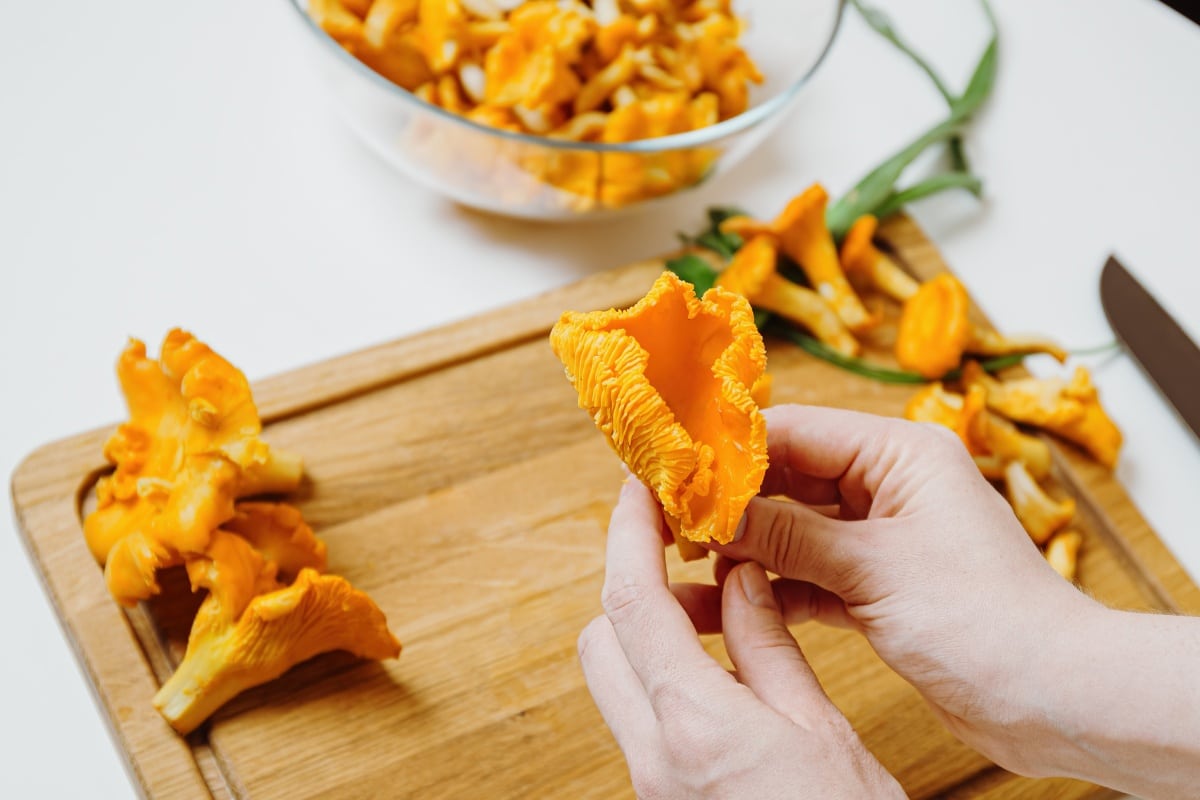
Preparing Chanterelle Mushrooms: Cutting
The size you need to cut the mushrooms depends entirely on how you plan to cook and prepare chanterelle mushrooms. Or what the recipe calls for. In general, small buttons can stay whole. It’s nice to keep them whole for better texture and flavor. Bigger mushrooms might need cutting to cook evenly. Cut pieces should be uniform so they can be cooked consistently. These mushrooms shrink quite a bit during cooking, so think over your sizes before chopping.
Fresh mushrooms should be about 1/2 inch thick for cooking. If you plan to dehydrate them, go with 1/4 inch thickness. The smaller, perfect specimens are worth keeping whole for special dishes that will showcase the mushrooms. Young buttons often feel like squeaky cheese. They are dense, firm, and slightly chewy. The mature mushrooms are better cut up and used in dishes where looks aren’t as important.
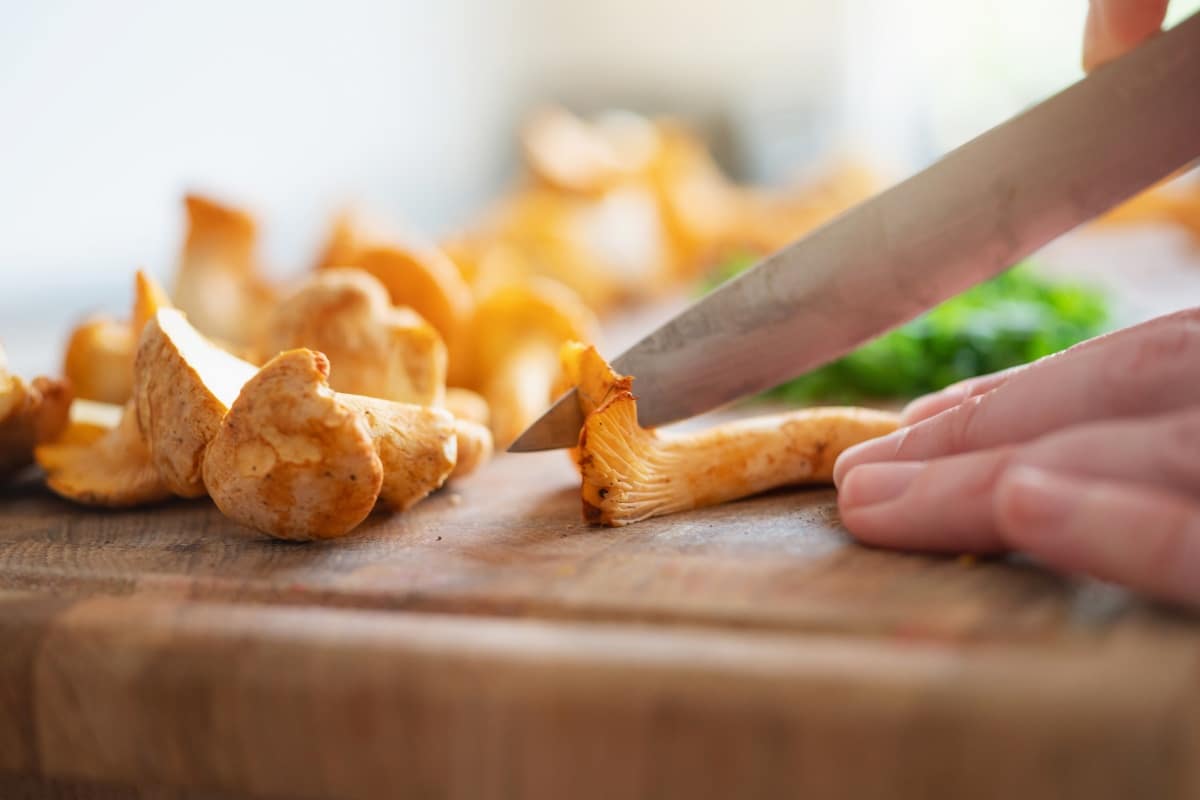
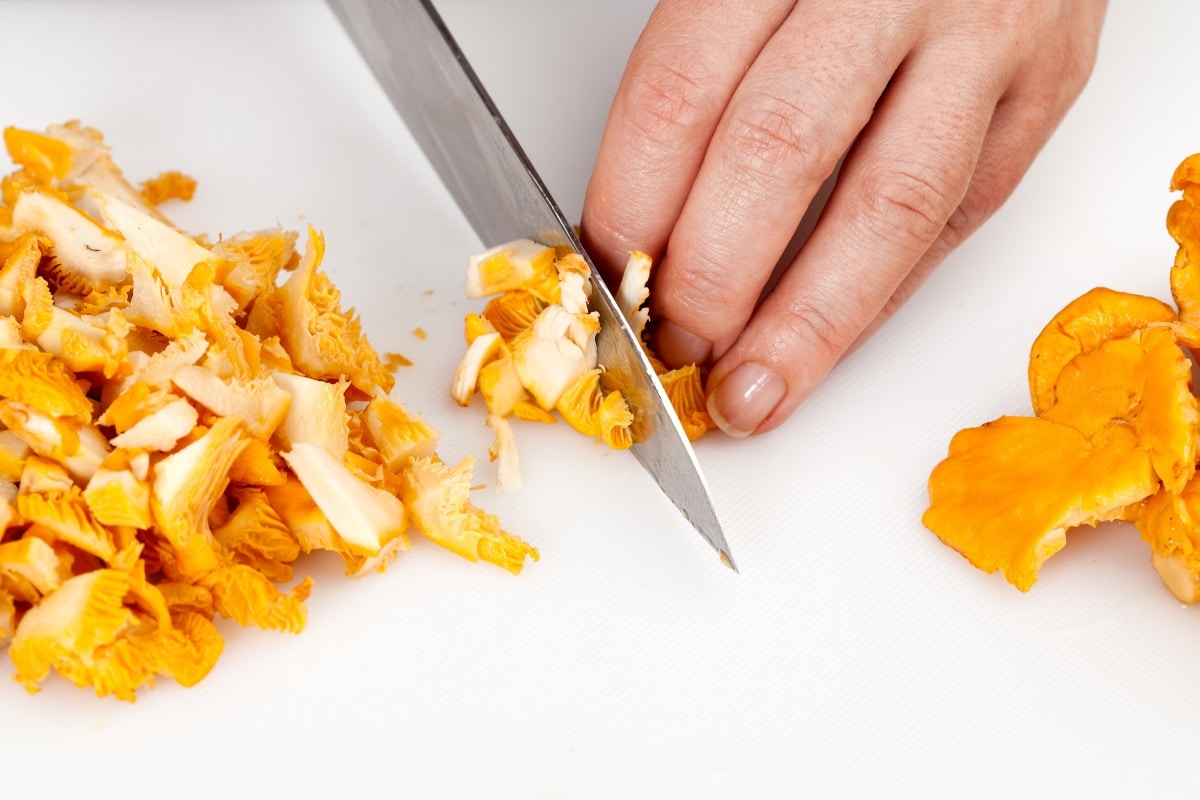
Prepare Chanterelle Mushrooms: Cooking
You can cook chanterelle mushrooms in several ways; there is not just one way to prepare chanterelle mushrooms, although many chefs have their preferences. Each method has its own benefits, depending on what you want to make.
Dry Sauté
Dry sautéing is a simple method that works great with chanterelles because they can hold a lot of moisture. Or, because you needed to do a deep soak of the mushrooms because of bugs or dirt.
To dry sauté the chanterelles, put the cleaned mushrooms in a hot, dry pan without any oil or liquid. The mushrooms first release their natural moisture and then soak it back up. This creates a rich, complex flavor. This method to prepare chanterelle mushrooms works really well with freshly washed chanterelles because it gets rid of extra moisture without ruining their texture.
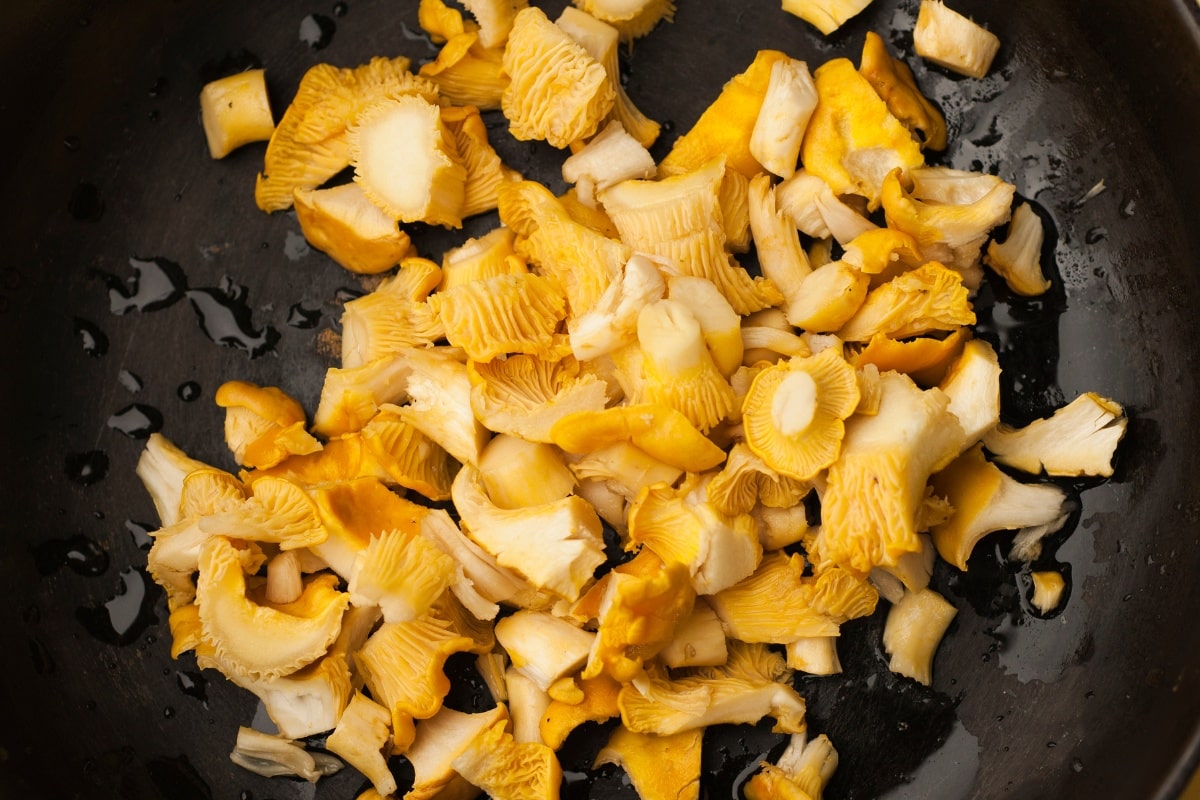
Sauté with oil
Regular sautéing with fats is also excellent option to prepare chanterelle mushrooms. You should start with oil and finish with butter to avoid burning while getting the best flavor. Start by searing on high heat in oil for about 3 minutes until they brown. Then, turn the heat to medium-high and cook them for another 5-8 minutes.
Add the butter at the end to keep the mushrooms from burning. This method is best for drier chanterelles. Soggy or soaked chanterelles will not turn out well with this method unless you dry sauté them first.
Roasting
Roasting is another super option to prepare chanterelle mushrooms; it works best for big batches. Roasting creates a rich, caramelized flavor and keeps the mushroom’s firm texture. To roast chanterelles, heat the oven to 400°F. Spread the clean chanterelles in one layer – if they’re too crowded, they won’t crisp up well. Let them roast for 10-12 minutes.
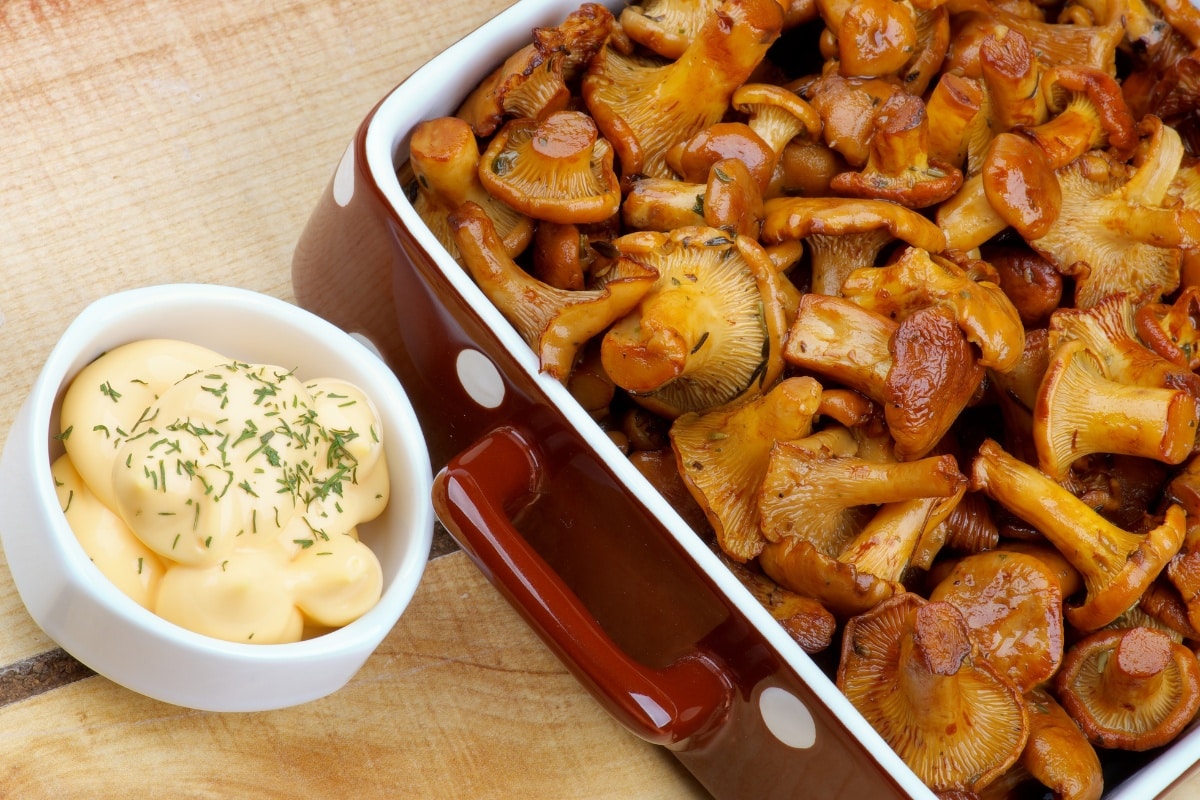
Simple Chanterelle Dry Sauté
The best choice of pan is cast iron or a well-seasoned stainless steel pan with a heavy bottom. These spread heat evenly and prevent hot spots that could ruin the delicate mushrooms. A 12-inch skillet is best because it’ll give you plenty of room so the mushrooms don’t get crowded.
Turn the heat to medium-high and let it get to temperature. Lay the chanterelles in a single layer in the pan and add a pinch of salt. The salt helps draw out the moisture. The mushrooms will release moisture as they heat up. Keep cooking and stir occasionally until all the liquid evaporates.
Once the pan dries out and most of the liquid is gone, lower the heat to medium-low. Next, add some butter to boost the flavor and get that beautiful golden-brown exterior. This two-step heating method develops rich flavors and keeps the mushrooms’ texture without overcooking.
Next, add in minced garlic and herbs. If you add a splash of seasoned rice vinegar or fresh lemon juice near the end, the flavor of the chanterelles will really shine.
The whole process should take 8-10 minutes. Plan for 5-7 minutes of dry-sauté, then 2-3 minutes with butter and seasonings. You’ll know they’re perfect when you see golden-brown color and slightly crispy edges.
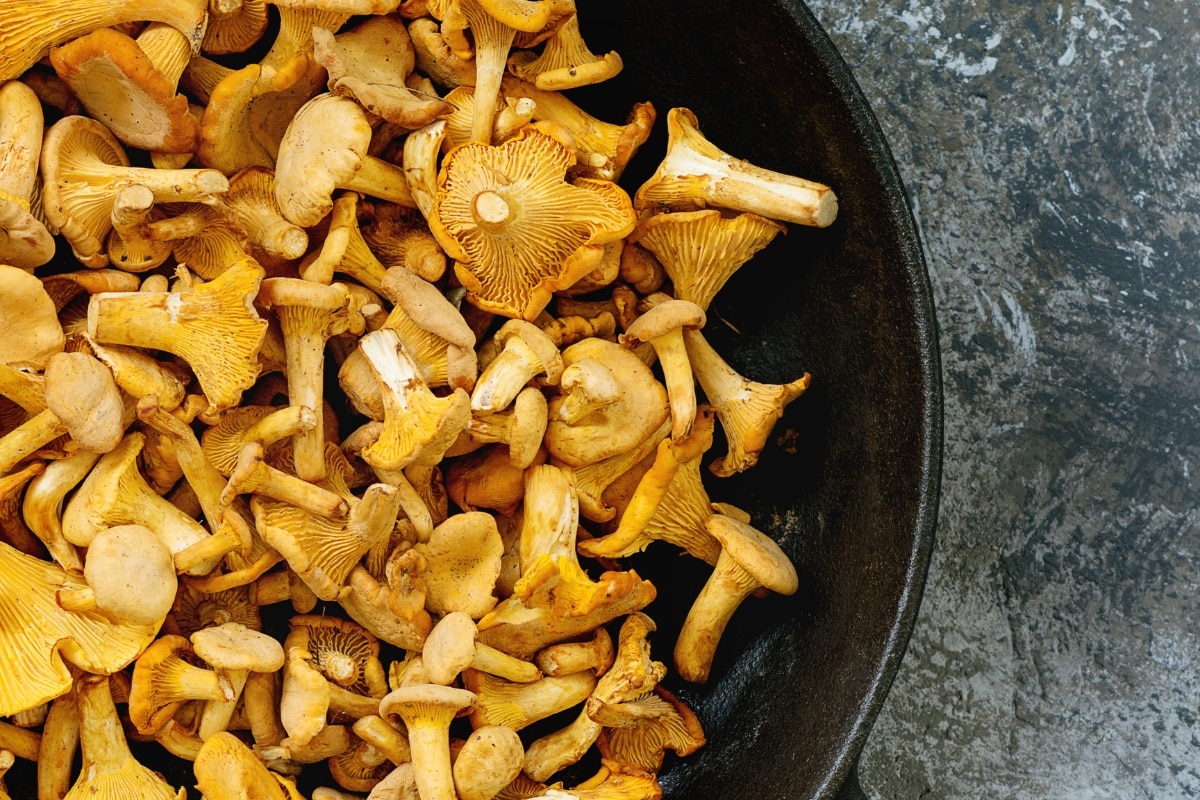
Chanterelle Cooking Tips
- Don’t add butter too early. It’ll burn before the mushrooms cook properly and add a weird flavor to the dish.
- Stop cooking once the mushrooms are heated through and lightly browned.
Our Favorite Chanterelle Recipes:
- Creamy Chanterelle Soup
- Chanterelle Dumplings
- Chanterelles with Cognac
- Chanterelle Ramen with Crunchy Fried Chanterelles
- Candied Chanterelles(!!)
- Stir-fried fresh chanterelles with soy sauce and ginger
- Creamed Chanterelles with Austrian Bread Dumplings
- Pizza with Chanterelles, Green Onions, Brie, Arugula, and Lemon
- Creamy Chanterelles
- Chanterelle Risotto
- Marinated Chanterelle Mushrooms
- Chanterelle Cream Sauce and Pasta
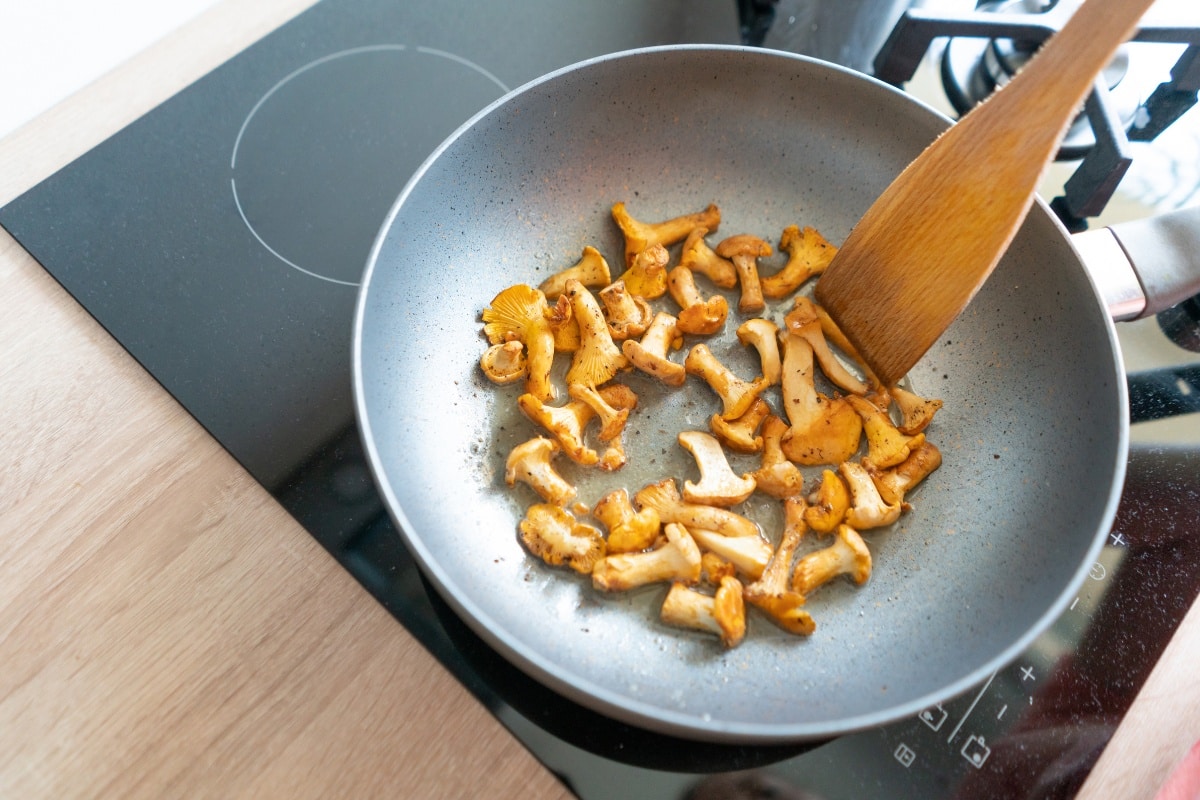
Chanterelle Mushroom Storage and Preservation
Chanterelle mushrooms will remain fresh for 7-10 days in the refrigerator. The best storage option is brown paper bags. Paper bags keep the right amount of moisture while also letting air circulate; this prevents moisture from accumulating, too, and causing the mushrooms to begin deteriorating. They do need some moisture though, so put a slightly damp towel in the bag with the mushrooms. Change the towels as they dry out. This keeps your mushrooms fresh for 7-10 days.
To store them in a bowl, cover the bowl with a slightly damp paper towel and put them in the refrigerator. This also allows for decent air circulation and prevents them from drying out.
Storing the mushrooms in plastic causes condensation and moisture to build up, and the chanterelles will deteriorate more quickly. No matter how you plan to prepare chanterelle mushrooms, avoid storing them in any time of plastic.
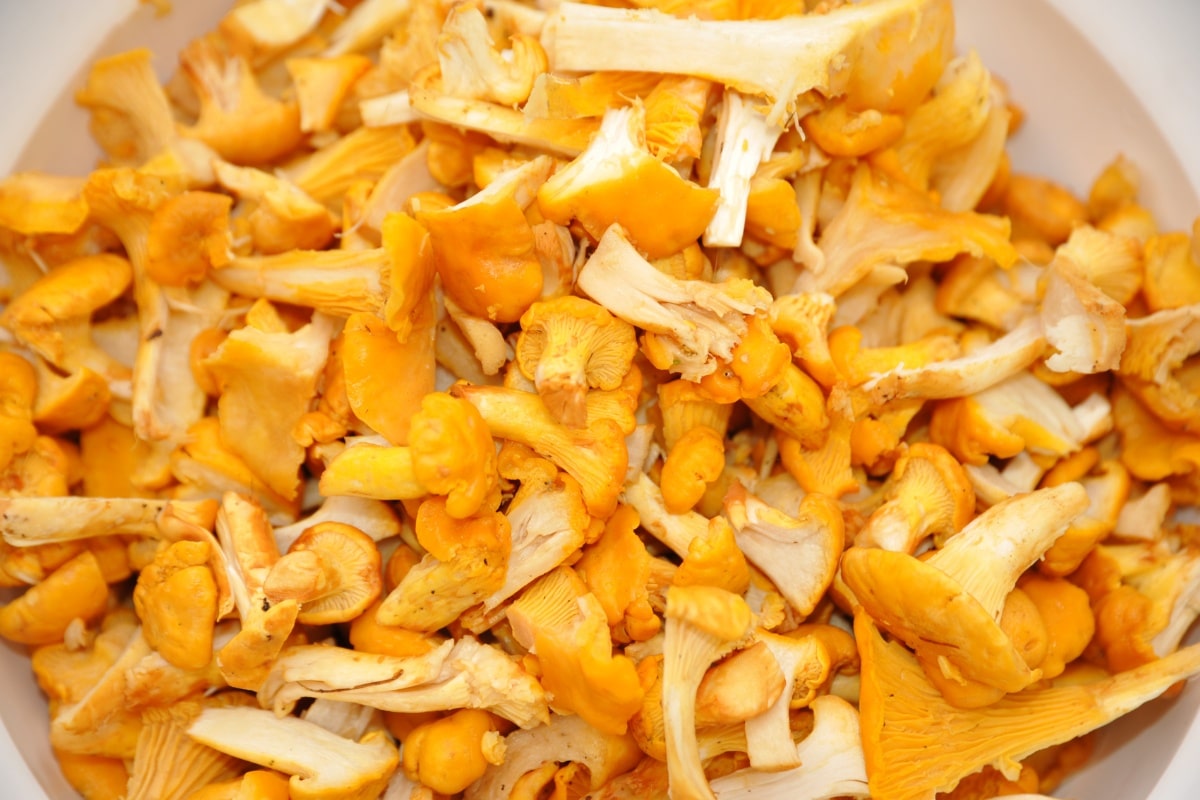
Freezing
Freezing works best for storing chanterelles long-term. You should dry sauté or steam the mushrooms before freezing. Raw chanterelles do not freeze well. To steam, put the chanterelles in a steamer basket over simmering water for 10 minutes. Let them cool, then pack them in freezer bags. The frozen chanterelles will keep their flavor and texture for up to 12 months.
We recommend packing the chanterelles in small portions based on your recipe needs. This prevents thawing too much at once. The frozen chanterelles can go straight into your recipes without thawing. This makes them perfect for year-round use in stews, risotto, and savory pies.
We love this clever storage trick – freeze the cooked chanterelles in muffin tins. This creates perfect portions that you can easily transfer to freezer bags. If you have any leftover cooking liquid, strain it and freeze it separately. It is excellent added to soups and stocks.
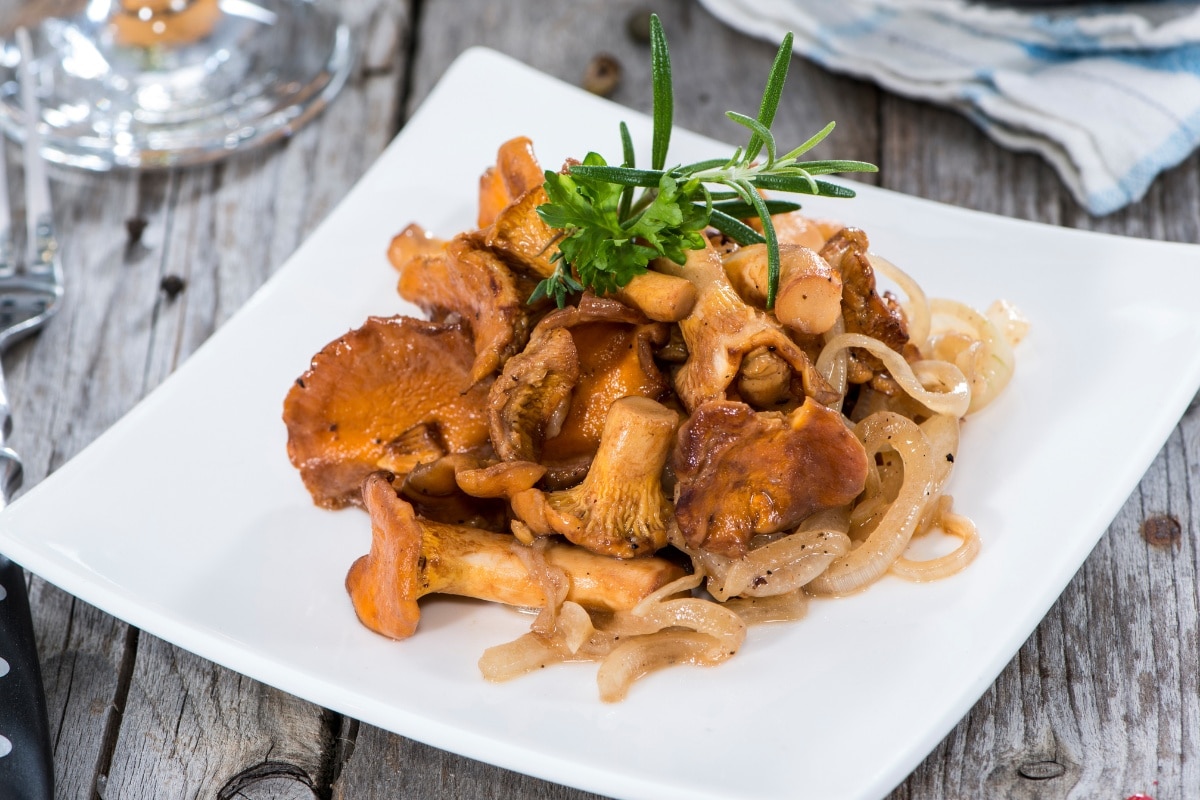
Pickling
Pickling is also a great way to preserve mushrooms. The pickled chanterelles recipe from Forager Chef is especially good. The technique is pretty simple. First, the mushrooms are dry sautéed or steamed to bring out their flavors. Then, they’re cooled and packed into jars with a mixture of water and vinegar. You can add thyme, garlic cloves, or black peppercorns for flavoring. When stored in the refrigerator, pickled chanterelles can last for up to a year.
Dehydrating
Drying is a great way to manage a large chanterelle harvest. However, dried chanterelles can get rubbery when you rehydrate them. Dried chanterelles are best powdered and used as a flavor boost.
Clean the mushrooms and spread them on dehydrator mesh sheets with enough space between slices for air to flow. The temperature should stay between 125-135 degrees Fahrenheit. Your mushrooms will take 4-8 hours to dry and should snap easily when bent.
Let your dried mushrooms cool completely before storing them. They’ll keep well in airtight containers or glass jars. Dark, cool storage spots help dehydrated chanterelles stay fresh for 6-12 months.
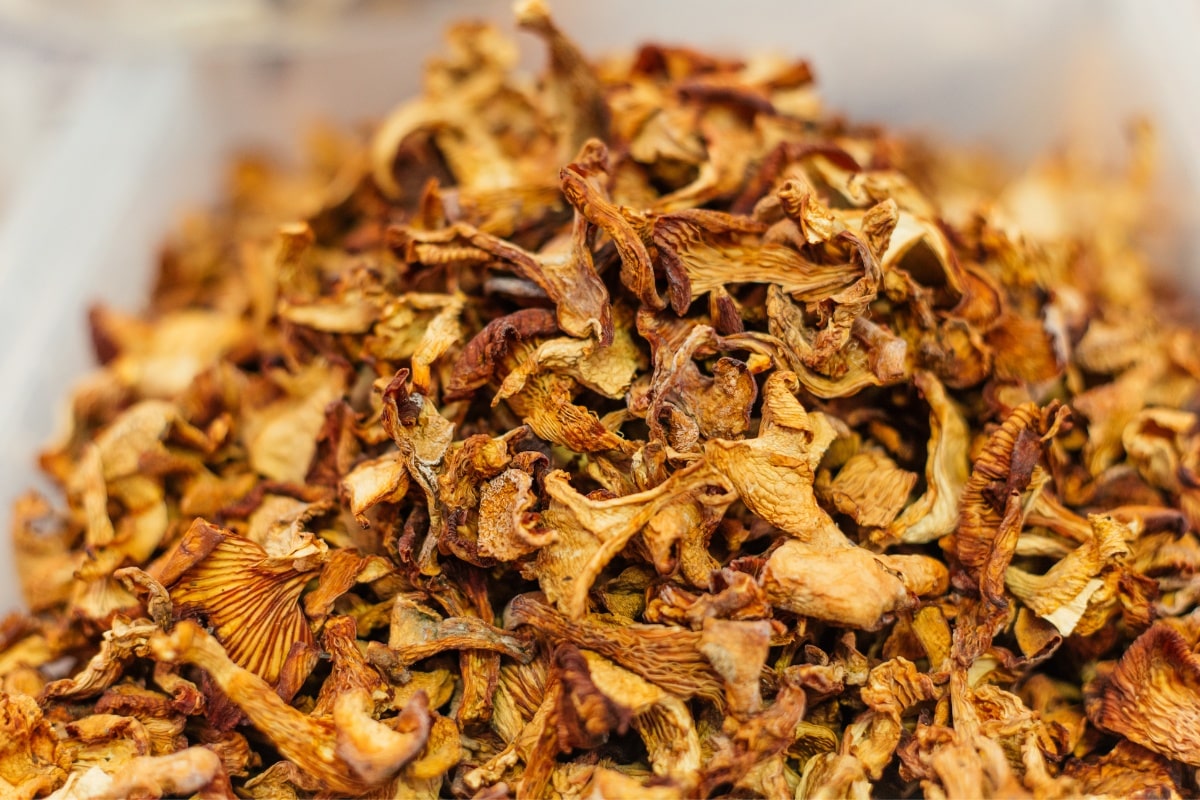
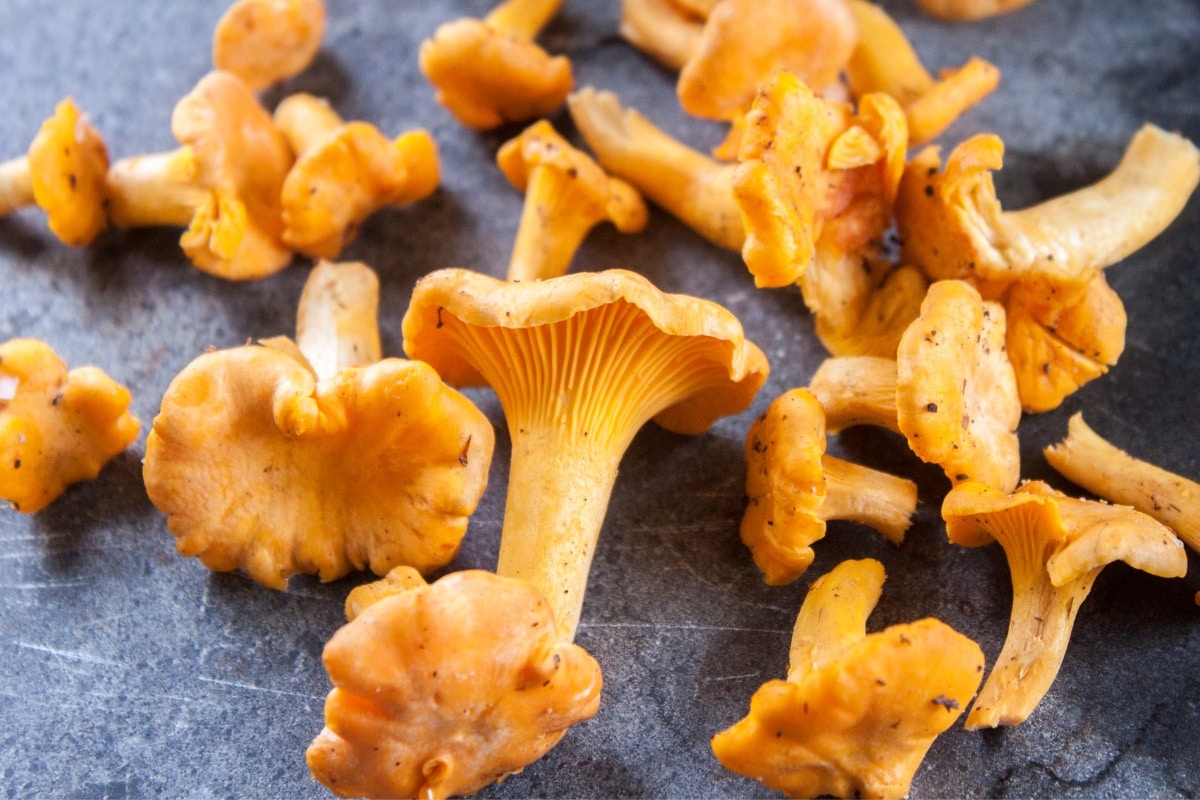
Common Questions About Preparing Chanterelle Mushrooms
How do I clean chanterelle mushrooms?
Gently brush off debris using a soft-bristled brush. For soiled mushrooms, rinse under low running water and use a soft toothbrush to clean the ridges. The back of a knife blade is great for scraping off stuck-on dirt in the cap and on the stem.
Can I eat the stems of chanterelle mushrooms?
Yes, the entire mushroom can be used in cooking (and should be used; don’t waste this treat!).
How long do fresh chanterelle mushrooms last?
Fresh chanterelles stay good for 7-10 days when stored in the refrigerator. Put them in a paper bag or bowl loosely covered with a paper towel. This allows for good air circulation. Plastic bags or containers will cause them to deteriorate quicker.
What are some ways to preserve chanterelle mushrooms?
Chanterelles can be preserved through freezing, pickling, or drying.

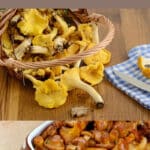




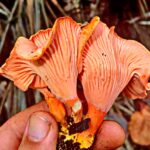
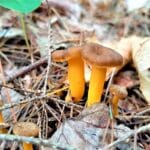
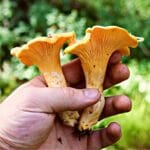
Leave a Reply